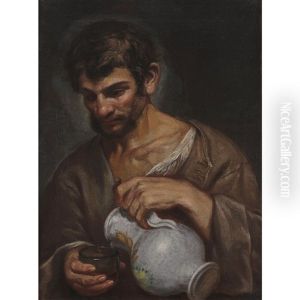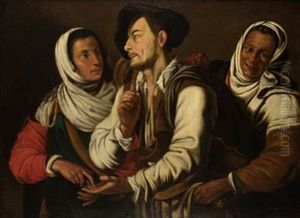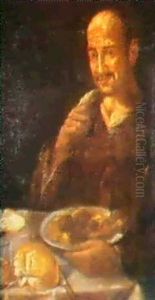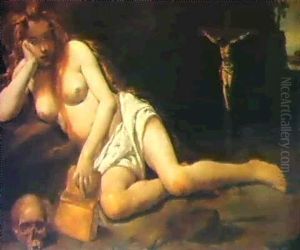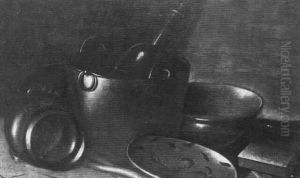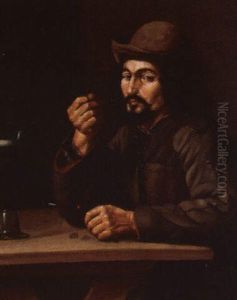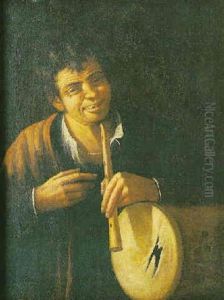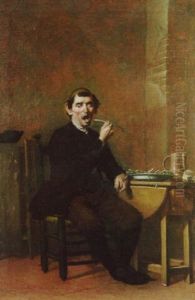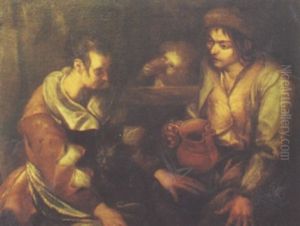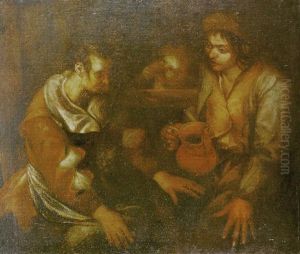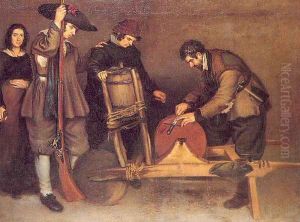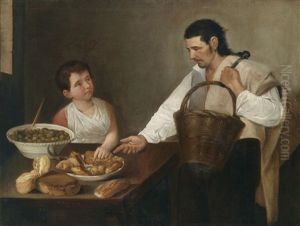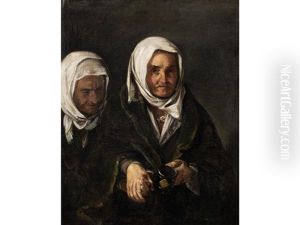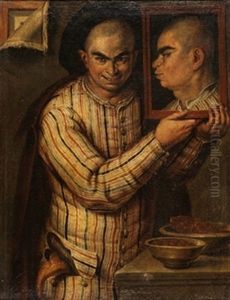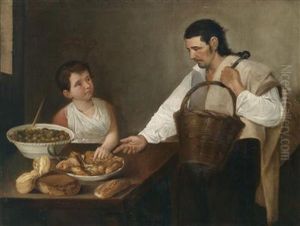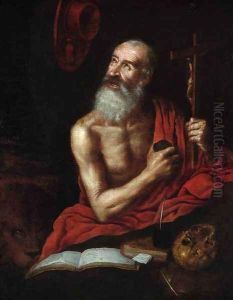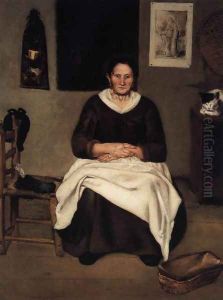Antonio Puga Paintings
Antonio Puga was a Spanish Baroque painter known for his depictions of everyday life in the 17th century, especially his genre scenes featuring common folk, such as peasants and beggars. Born in Ourense, Galicia, in 1602, Puga is often considered one of the notable followers of the Spanish master Diego Velázquez. Despite his regional origins, Puga's work reflects the broader artistic trends of the Spanish Golden Age, characterized by a keen attention to realistic detail and a subtle use of light and shadow.
Puga's artistic journey began in his hometown, but he later moved to the more culturally vibrant city of Madrid, where he was exposed to the works of contemporary Spanish artists. His paintings show a strong influence of Velázquez, particularly in the treatment of figures and the use of chiaroscuro. Although Puga did not achieve the same level of fame as Velázquez, his works were nonetheless appreciated for their lifelike quality and their portrayal of the human condition.
One of Puga's most recognized paintings is the 'Old Woman Frying Eggs,' which showcases his skill in capturing the textures of everyday life and his empathy for the lower classes. His genre scenes often depicted the simple activities of the peasantry, imbued with a sense of dignity and realism that was ahead of his time. Puga's work also includes religious paintings and portraits, although these are less known compared to his genre scenes.
Antonio Puga's career was relatively short-lived; he died in 1648 at the age of 46. Despite his early death, his work left a lasting impression on the development of genre painting in Spain. His paintings can be found in various museums and collections, offering a glimpse into the lives of 17th-century Spaniards and the artistic movements that influenced European art during that period.
